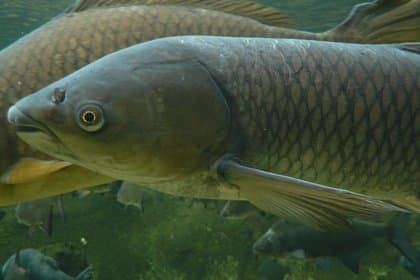Fish Farming: An Overview of Aquaculture
Fish farming, also known as pisciculture, is a commercial method of breeding fish for food production in controlled environments such as fish tanks or ponds. It is a type of aquaculture that cultivates and harvests aquatic animals, including fish, crustaceans, molluscs, etc. The global demand for dietary fish protein is on the rise and this has led to overfishing in wild fisheries, causing a decline in fish stocks. Fish farming provides a solution by creating artificial colonies that are protected from natural predators, provided with food and veterinary services, and can be harvested easily without affecting wild fish populations.

Fish farming, also known as pisciculture, is a form of aquaculture that involves the commercial breeding of fish for food. Aquaculture refers to the cultivation and harvesting of aquatic animals, including fish, crustaceans, and molluscs, in natural or artificially created environments. Fish hatcheries, on the other hand, are facilities that release juvenile fish into the wild to supplement natural populations or for recreational fishing.
Global Demand for Fish Protein
The global demand for dietary fish protein is increasing, which has resulted in overfishing in many wild fisheries. This overfishing has caused a decline in fish stocks and even complete depletion in some areas. Fish farming provides a solution by creating artificial fish colonies that are protected from predators, well-fed, and have access to veterinary care. These farms can be easily harvested when needed and do not impact the sustainable yields of wild fish populations. Currently, China accounts for 62% of the world's farmed fish production, and over 50% of the world's seafood is produced through aquaculture.
Growth of Aquaculture
Aquaculture has been the main driver of the increase in fishery and aquaculture production over the past three decades, growing at an average rate of 5.3% per year from 2000 to 2018. The most important fish species produced through fish farming are carp, catfish, salmon, and tilapia. However, farming carnivorous fish like salmon, which require fishmeal and fish oil extracted from wild forage fish, may not always reduce pressure on wild fisheries. In 2008, the global returns for fish farming were 33.8 million tonnes worth around US$60 billion.
Types of Aquaculture
There are two forms of aquaculture: extensive and intensive. Extensive aquaculture is carried out in the ocean, man-made lakes, bays, rivers, and fiords, and relies on local photosynthetic production. Fish are contained within these habitats by mesh enclosures, which also serve as trapping nets during harvest. Site placement is crucial to ensuring the rapid growth of the targeted species, but the facilities depend on the surrounding area for good water quality. Some of the most widely farmed seafood in extensive aquaculture include seaweed, prawns, mussels, carp, tilapia, tuna, and salmon.
Intensive aquaculture, on the other hand, is more sophisticated and requires more effort, as fish are fed with external food supplies. This type of aquaculture can have negative impacts on the environment, such as destroying natural habitats in the development of man-made ponds and introducing invasive species into ecosystems through escaped fish. The high amount of organic waste produced by the fish can also deplete benthic habitats and reduce the available oxygen in the water, killing benthic organisms.
Conclusion
Fish farming provides a solution to the growing demand for dietary fish protein and helps reduce pressure on wild fisheries. While it has many benefits, it is important to consider the potential negative impacts on the environment and take necessary steps to minimize them. To ensure the long-term sustainability of aquaculture, it is essential to adopt responsible farming practices and implement regulations to minimize the negative impacts on the environment.
No comments yet, be the first to share your thoughts!
Newsletter
Sign up for our newsletter and stay up-to-date on the latest tips, tricks, and techniques in carp fishing. From beginner to expert, our newsletter offers something for every level of angler. Do not miss out on exclusive content, product reviews and fishing reports that will help you catch more carp.
Related Posts
How to Make Homemade Carp Fishing Boilies with Shredded Wheat and Jello
almost 3 years ago
What Is The Difference Between Buffalo Fish And Carp?
almost 3 years ago
How to Make Homemade Carp Fishing Boilies with Pre-Digested Fish Meal and Milk Protein Blend
almost 3 years ago
Make Your Own Pineapple Flavored Corn Bait at Home
almost 3 years ago
Carp Species and Natural Habitat
almost 3 years ago
10 Rig Boxes for Keeping Your Tackle Organized and Ready to Use
almost 3 years ago